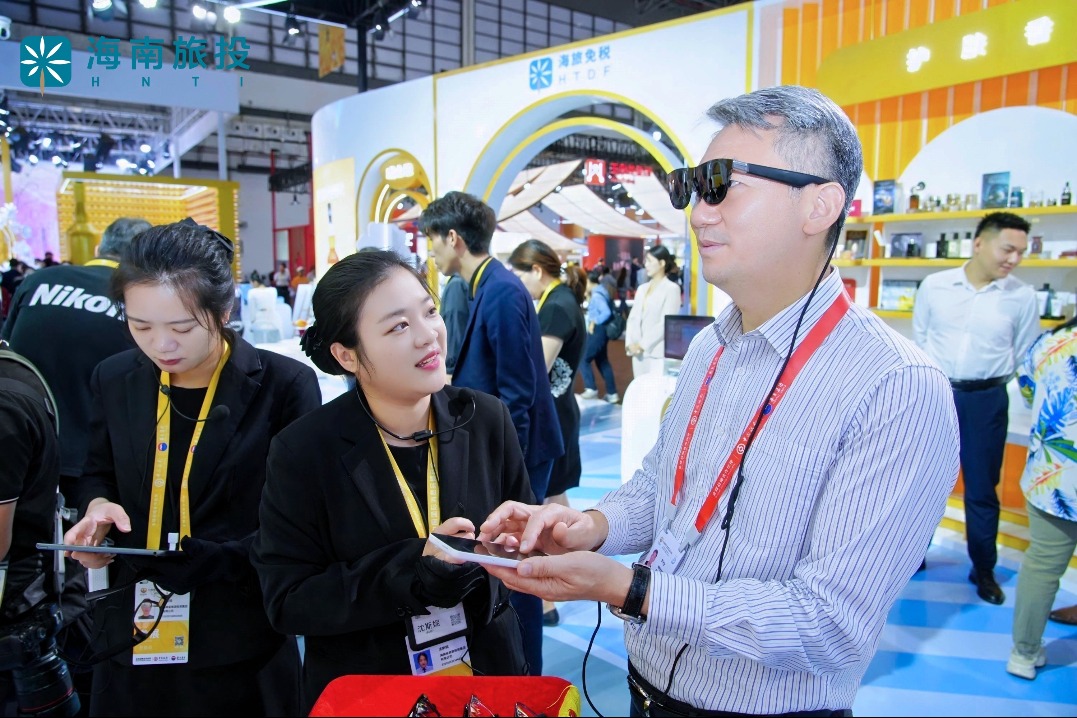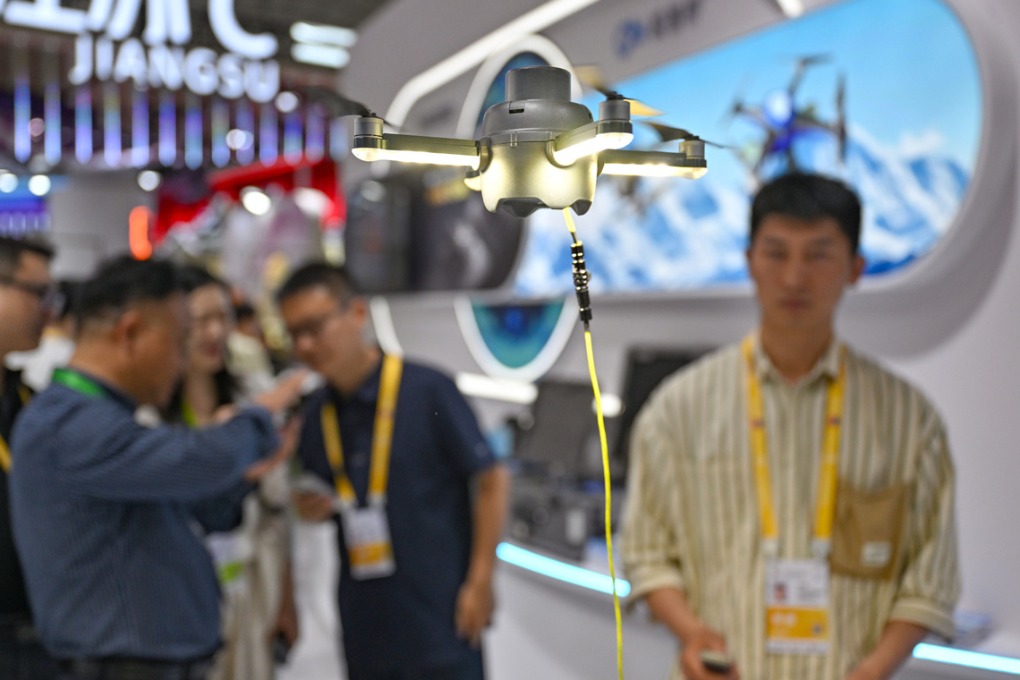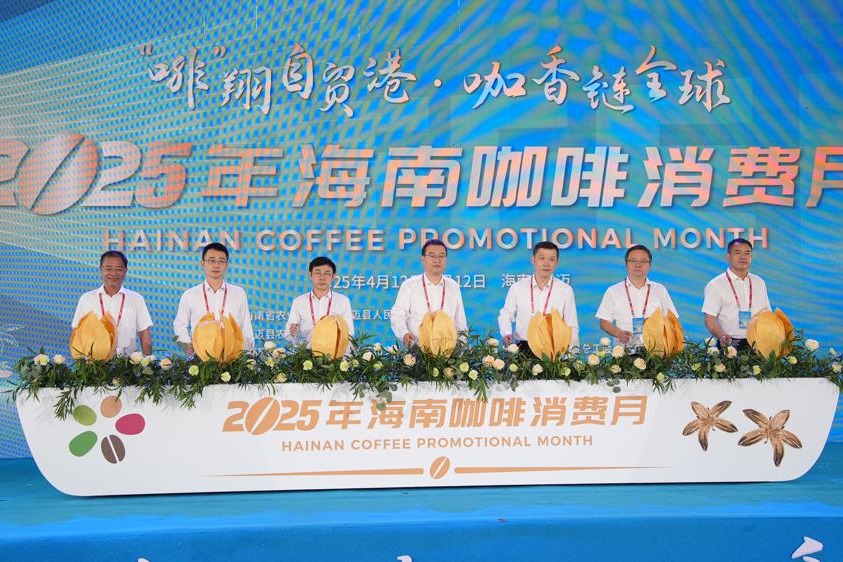Chinese companies going global: Lessons and experiences

Editor's note: An international symposium, focusing on the innovation, development and overseas expansion of Chinese companies, was held at the Tokyo Opera City Tower in Japan on Dec 1, 2024. The event was organized by Cloud River Urban Research Institute and supported by China Internet Information Center.
Key speakers included Zhou Qiren, professor at the National School of Development, Peking University; Xu Lin, chairman of the China-US Green Fund; An Ting, chairman of Beijing Chic-PIA International Cultural Development Co, Ltd; and Lin Huichun, professor at the Belt and Road School of Beijing Normal University. They weighed in on the successes and lessons from the overseas ventures of Chinese companies.
Lin Huichun:
Currently, many Chinese companies are venturing into international markets. Despite of notable successes made by some companies, there have also been failures. What lessons have been learned from these experiences?
Zhou Muzhi:
At the end of the 1980s, Zhou Qiren and I studied abroad, kind of "going global". Today, the international expansion of Chinese companies can be seen as the third significant transformation since the reform and opening-up. The first significant transformation was the reform and opening-up; the second was China's urbanization; and the third is the global expansion of Chinese companies. The first two transformations not only profoundly changed China but also impacted the world.
The global expansion of Chinese companies has just begun, but its influence is hard to ignore. With its massive economic scale, strong momentum, and astonishing growth rate, this transformation is reshaping the global landscape with unprecedented impact.
Xu Lin:
For Chinese companies, going global means stepping out of a familiar environment into an unfamiliar one, and it will undoubtedly come with many challenges.
During my tenure as director-general of the Department of Fiscal and Financial Affairs at the National Development and Reform Commission, right after the global financial crisis, I attended a State Council meeting discussing the issue of companies going global. A leader mentioned that many companies spoke with him about their eagerness to expand overseas markets, but they confronted domestic regulations. He cautioned that companies should not think that going global would lead to success, as the overseas environment is quite different from that in China.
For Chinese private enterprises, China's local governments often provide substantial support and help them solve problems. However, the situation is a far cry from the overseas environment. These firms not only encounter labor strikes abroad, but also find that local governments do not offer the same level of assistance as their Chinese counterparts do.
Moreover, there is an even more critical issue: how can Chinese companies truly integrate into local communities during going global? It is essential for the local employees to identify with the company and feel a sense of pride in it, which is not an easy thing.
Take Goldwind Sci & Tech for instance, a wind power equipment company based in Xinjiang. They acquired a German company and extended their R&D chain overseas. This is an example of going global. However, the team they sent out had difficulty integrating with the local employees. After holding a series of activities, the team found that Chinese hotpot worked like magic. At a hotpot dinner, Chinese and foreign employees gathered at the table, reached for food with chopsticks, and drank wine, thus significantly getting them closer.
Moving forward, our government should provide more services and support to help companies address challenges such as the integration issue.
An Ting:
Beijing Chic-PIA International Cultural Development Co., Ltd., founded in September 2000, is China's first Sino-foreign joint performance company listed on the New Third Board. We encountered some obstacles during the establishment of the joint venture with Japan's Pia Corporation.
Pia Corporation is Japan's largest ticketing company. Their chairman is well-known in Japan and has a strong affinity for China, with a particular interest in expanding business into the Chinese market. They had visited many cities and companies in China before visited Poly Group. At the time, we had a joint venture with Poly, which recommended that we partner with Pia Corporation to form a joint venture.
We were very eager to collaborate with a Japanese company, leveraging such a platform to export Chinese products to Japan and other Asian countries. However, due to language differences and, more importantly, different perceptions and ways of thinking between the two sides, the negotiations to establish the joint venture took two years.
During that period, I frequently visited Japan, and they often came to China. We became friends. Once we became friends, it was easier to stand in each other's shoes when discussing business matters, facilitating consensus and reaching agreements more readily.
Zhou Muzhi:
I serve as an independent director at Beijing Chic-PIA International and an advisor to Japan's Pia Corporation. At one point, there were communication issues between the two sides, and the Japanese party even considered withdrawing their investment. They invited me to join the board to make a final judgment.
I told An Ting that I was there to help him. I suggested listing the company on the New Third Board, and this idea could be applied to overseas markets in the future as well. Once a company is listed, it has to undergo supervision and guidance from securities firms regarding its management, thereby making the company more standardized and transparent. This structure provides a clear framework for addressing issues between joint venture partners. Although the New Third Board lacks liquidity, it has played a significant role in standardizing many tech companies.
I have consistently recommended the Beijing municipal government should develop the securities market. Not only is it beneficial for financing, but it is also crucial for improving the management, standardization, and transparency of companies.
When Chinese enterprises go abroad, they need to establish a mechanism both sides recognize. The securities trading market and financial platforms are incredibly important in this context.
While convincing An Ting, I also persuaded the Japanese side. The Japanese were typically focused on how much profit the joint venture could generate and were keen to repatriate profits back to Japan. I suggested that instead of focusing solely on short-term profits, they should consider how having a high-quality joint venture overseas could enhance their market value on the Japanese main board. Adopting this broader perspective can provide greater long-term benefits.
The world is vast, and many elements require cross-border integration. Whether our companies are venturing abroad or attracting foreign investment, we should take a more open and broad view. This outlook should apply to both our own initiatives and our interactions with partners.
Zhou Qiren:
The leap from exporting to operating abroad is significant, but the variable throughout this transition is the customer. It is crucial to closely follow the customers, rather than arbitrarily deciding where to set up operations based on a map with grand plans.
Midea was among the first Chinese companies to ventured abroad and they confronted obstacles during the process. In 2006, they established a factory in Vietnam but struggled to turn profitable for several years, and in 2014 local riots erupted. Reflecting on their experiences, they learned not to blindly pursue greenfield investments (a form of foreign direct investment where a parent company starts a new venture in a foreign country by constructing new operational facilities from the ground up) from scratch, but rather to acquire shares in local subsidiaries of established American and Japanese companies at the first place. This approach allowed them to get involved in management and learn international operation. Midea can benefit from the customer base, supply chains, and management experiences that these veteran companies had already built.
As a result, Midea's ensuing international ventures were successful. They avoided new greenfield projects and instead sought out excellent partners, focusing primarily on their capability to serve new customers.
This strategy helps to address a common weakness for Chinese enterprises. In the past, an export-dominated approach prevented a company from interacting with customers directly because of intermediaries, leading to a gap in learning about customer needs and market dynamics. This approach limited the companies' ability to penetrate local markets effectively.
When expanding internationally, companies also need to respect local culture and customs. Some businesses decorate their facilities with Chinese cultural symbols like stone lions and statues of Guan Yu. This is appreciated in some settings, but it should be careful in regions with different cultural backgrounds. For instance, in an industrial park in Ho Chi Minh City, regardless of whether the companies were Japanese, Korean, or Chinese, they are just like a Western company, using only English or Vietnamese signage. This is a good move and it doesn't necessarily diminish the appreciation of Chinese culture.
Lin Huichun:
I have summarized four fundamental principles for going global.
First, get out there. It's crucial to go abroad and see by yourself. Without firsthand experience, you cannot truly understand the market.
Second, delve deep. Don't just take a cursory look. Conduct thorough and in-depth investigations.
Third, integrate. Successfully become a part of the local environment.
Fourth, localize. Localization is key. For example, at Changhong's European branch in the Czech Republic, 13 managers oversee more than 400 local employees, effectively operating through local management. This approach has proven to be successful.




































